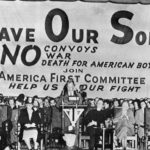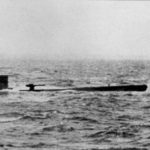During World War II, German armed forces communicated via the now famous Enigma cipher device. The machine, about the size of a typewriter, encrypted messages that could not be deciphered except by another Enigma device. Both machines had to be calibrated with the same three-letter code for the system to work.
The Germans were so confident of their encryption system that they believed their enemies were incapable of breaking the Enigma code. Here’s why.
Enigma had a keyboard resembling that of a typewriter. Above the keyboard, where a typewriter’s keys would move to strike a letter on paper, the Enigma had a “lightboard.” The lightboard had the same arrangement of letters as the keyboard, with each letter able to light up individually. Striking a key on the keyboard caused a different letter to light up on the lightboard. This was because the keyboard key sent an electric impulse through a series of scrambling elements inside the Enigma before it reached a letter on the lightboard.
Above the lightboard, where a typewriter would have a platen roller to receive a piece of paper, Enigma had three wheels mounted side-by-side on a spindle. Each wheel was nearly four inches in diameter and had twenty-six electrical contact points that corresponded to the letters of the alphabet. The internal wiring of the wheels differed, so that one wheel might receive an electrical impulse through its letter “H” and output the impulse through a different letter, say its “C.” Each wheel thus scrambled the signal to change the letter.
The first wheel advanced to its next letter every time a key was struck on the keyboard. At some point in its rotation, the first wheel caused the second wheel to advance to its next letter. Likewise, the second wheel had a tripping point that caused the third wheel to advance one letter. After the impulse passed through the three wheels, a “reflector” sent the impulse back through the wheels via a different route. The reflector function made Enigma self-reciprocal, so that a receiving machine set up identical to the sending machine could decrypt the message.
The Enigma operator had five wheels from which to choose the three to place on the spindle. The wheels were designated by Roman numerals and each day, the wheels and their order on the spindle was changed, as was the starting letter setting for each wheel.
To complicate matters even more, Enigma had an additional scrambling element called a plugboard, which was located below the keyboard and resembled a small telephone switchboard. The plugboard mirrored the keyboard, with the twenty-six letters of the alphabet, each with a plug receptacle below it. The operator could randomly pair two letters by plugging a cable into each letter’s receptacle. As many as ten pairs of letters might be connected for the day’s setting.
Before the electrical impulse from the keyboard reached the first wheel, it went through the plugboard, where it might be changed to a different letter. Likewise, after the impulse went through the wheels it returned through the plugboard, possibly changing letters again, before going to the lightboard to cause a letter to light up.
The operator sending the message copied down the letters from the lightboard and transmitted them via Morse code in four- or five-letter groups. The operator on the receiving end keyed the letter groups into an Enigma machine with identical settings and copied down the letters appearing on the lightboard to decrypt the message.
The number of possible configurations totaled 3 X 10 with 114 zeros behind it. Small wonder, then, that the Germans considered their communications to be unbreakable.
Nevertheless, the Enigma code was broken. It was an effort that involved spies, cryptographers, mathematicians, and daring-do on the high seas, as we will see in succeeding blogs.





